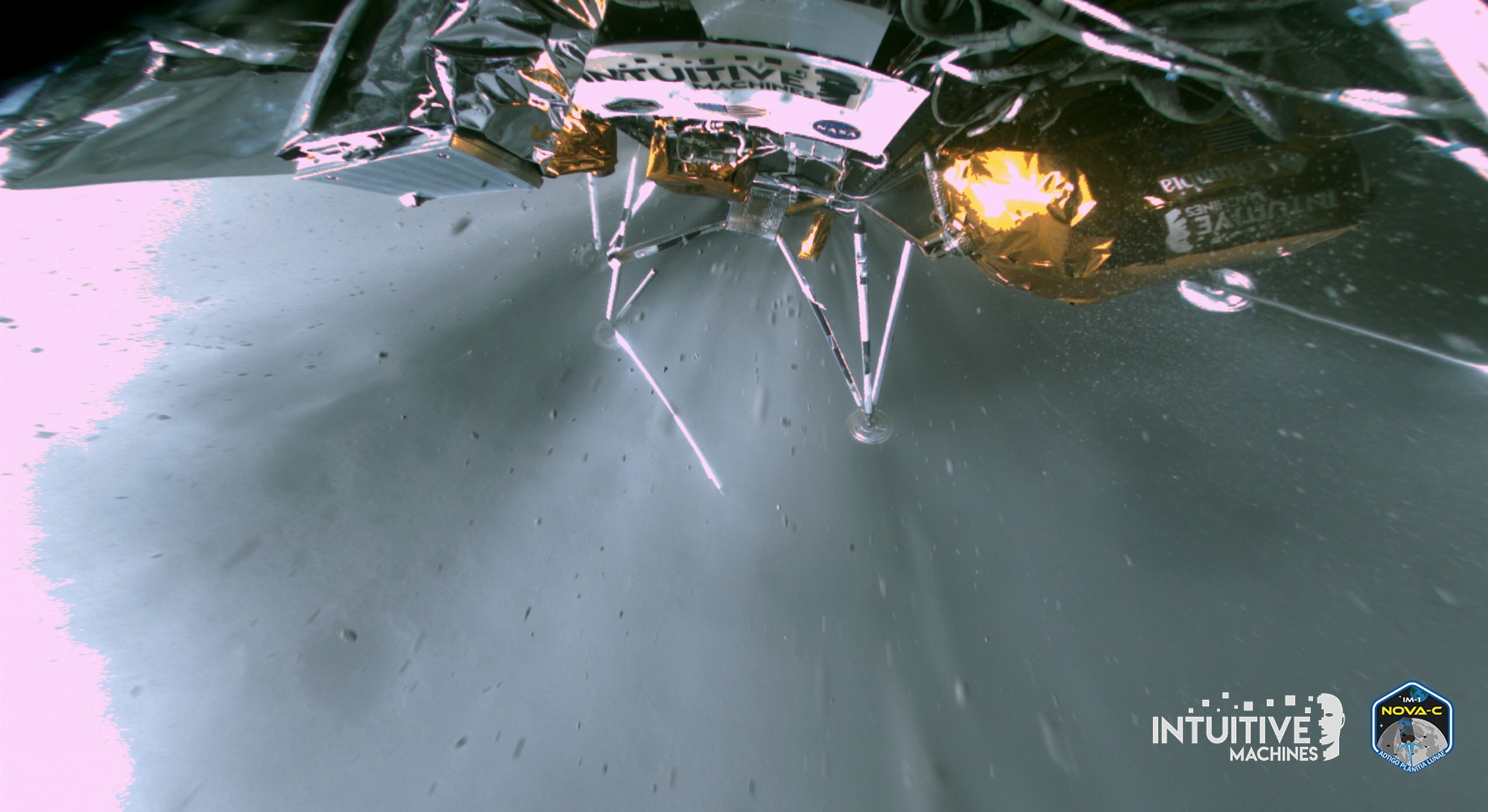A new snapshot from the first private moon landing shows the moment the spacecraft touched down in what looks like a foggy mist — with a broken leg.
The image depicts Intuitive Machines’ lander Odysseus with its engines still firing. On the left side, pictured above, landing gear pieces are visibly broken off from one of the robotic craft’s six struts, said the company’s CEO Steve Altemus.
That milky haze surrounding the craft isn’t fog but the engine exhaust gasses interacting with the lunar surface, churning up moon dust — something many scientists are keen to investigate, he said during a joint news conference with NASA on Feb. 28 about the space mission.
The commercial lander has surprised its engineers and NASA with how long it has been able to continue operating in its slumped configuration. Earlier this week, Intuitive Machines estimated the lander would lose power on Feb. 27, due to the changing direction of sunlight and the angle of Odysseus’ solar panels. But a day later, it was still generating solar power, though perhaps only for a few more hours, officials said.
The new image was released alongside another taken by the lander’s narrow-field-of-view camera, which shows Odysseus on the ground, in its tilted sideways stance. The team thinks the lander, affectionally nicknamed “Odie,” is either leaning on a helium tank or a computer shelf.
Credit: Intuitive Machines
“Here we are: how Odie conducted the brilliant six-day mission on the surface,” Altemus said, anthropomorphizing the spacecraft in the above photo.
NASA officials say they consider the mission successful because all six of the agency’s instruments onboard were functioning and gathering data. NASA’s contract with Intuitive Machines was $118 million.
Credit: Intuitive Machines
The unprecedented achievement of the first commercial uncrewed landing is a win for NASA, which has invested $2.6 billion in contracts with the company and several other vendors to deliver instruments to the moon over the next four years. The recruitment initiative, known as Commercial Lunar Payload Services (CLPS), is intended to establish a regular cadence of moon missions to prepare for putting NASA’s Artemis astronauts on the moon in 2026 or later.
It’s been more than a half-century since the first crewed moon landing, but getting onto the surface without crashing remains challenging. The lunar exosphere provides virtually no drag to slow a spacecraft down as it approaches the ground. Furthermore, there are no GPS systems on the moon to help guide a craft to its landing spot. Engineers have to compensate for these shortcomings from a quarter-million miles away.
A combination of gravity and inertia factors seem to have hindered both Odysseus and the Japanese moon lander SLIM, short for Smart Lander for Investigating the Moon, said Phil Metzger, a planetary scientist at the University of Central Florida. Both are on the moon, but neither is upright. Everything on the moon is “six times tippier,” he said in a post on X, formerly Twitter.
Flight controllers plan to see if they can wake Odysseus from sleep mode in about three weeks, following a long, cold lunar night. The risk is that the deep freeze, which can plunge to -270 degrees Fahrenheit, will destroy the chemistry of the batteries. But there is reason to be hopeful: Japan’s lander, on a different part of the moon, recently awakened from its nightfall hibernation.
“He’s a scrappy little dude,” said Sue Lederer, a NASA project scientist. “I have confidence in Odie, at this point.”







